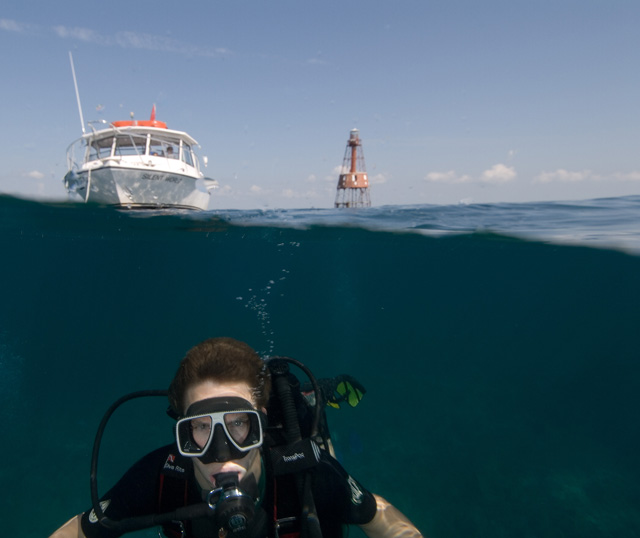One of the challenges is the disparity in exposure between the "over" scene and the "under" scene. Nemrod's excellent shot above takes advantage of the shade, I think, to combat the problem. I have read that other photographers use a split diopter to shade the "over" scene. I wish I knew where to buy one. And then you have to get the waterline to match the diopter line, which is probably a matter of a little luck and a lot of attempts.
Another challenge is water droplets on the dome. The use of Rain-X has been debated quite a bit. I have a glass dome, but a lot of domes are acrylic, and might not react well to it. I just dunk my dome before shooting and the water doesn't form droplets, for the most part.
Another difficulty is steadying yourself at the surface. Underwater you have no problems remaining relatively motionless, hopefully, but afloat on the surface it's not quite as easy.











